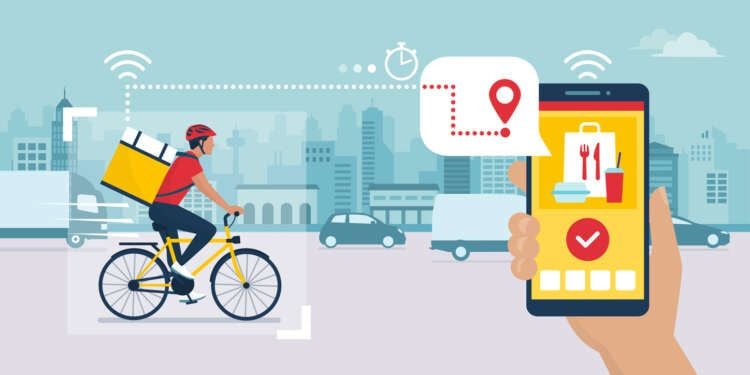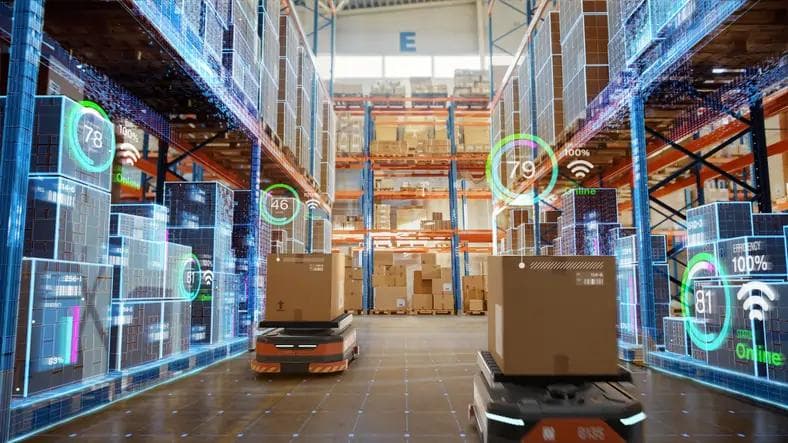Winning the loyalty of customers with a virtual restaurant brand
Winning the loyalty of customers with a virtual restaurant brand
Published by Jessica Weisman-Pitts
Posted on October 4, 2022

Published by Jessica Weisman-Pitts
Posted on October 4, 2022

Zhong Xu, CEO and co-founder, Deliverect
Looking back some years ago, few in the hospitality industry would have been able to meaningfully define a virtual brand, particularly in the context of food service. Despite presence of the concept in the market as far back as 2014, restaurant virtual brands rose to prominence during the height of the global pandemic when most restaurants were forced to shut their doors.
As the cost of living rises and inflationary pressures continue to impact both customers and restaurant owners alike, consumers have become increasingly likely to be more selective about the food they order and the establishments they frequent. For restaurants, establishing and retaining customer loyalty by differentiating their offerings effectively amongst competition in the market has therefore become mission critical.
Virtual restaurant brands offer an excellent way of enabling a restaurant to offer a variety of food options to customers whilst concurrently streamlining processes to enable deeper relationships with customers. But what exactly are virtual brands, and how can restaurants use them to reach more customers?
Building virtual brands
Virtual brands are a delivery-only concept – essentially, restaurants without a storefront. Because they aren’t tied to a physical location, orders for virtual brands can theoretically be fulfilled from anywhere. Many are run out of the existing kitchens of an established brick-and-mortar restaurant, but only serve food on delivery and present a different concept than the restaurant they work from.
The virtual brand model is appealing in many ways. For one, restaurant owners can run an additional restaurant using their existing location and staff, allowing the opportunity for expansion at low start-up costs. Second, if they choose to use their own existing facilities, they can focus their attention and capital on the food without having to wrestle with the extra space, staff, and money required to maintain an in-house dining room. With either approach, this business model allows eateries to increase sales and reach new customers without the headache of higher operational costs.
Restaurateurs might want to consider the merits of incorporating what have become known as “Dark Kitchens” in order to further establish their virtual brands. Also known as virtual kitchens, cloud kitchens or ghost kitchens, they all revolve around the same concept: selling meals exclusively through delivery. Not having to provide customer seating and waiting areas significantly lowers the cost of rent and additionally, there’s no need to hire serving staff either. Ghost kitchens can therefore useful way for restaurants to reduce overheads, while increasing their capacity to cater to the increased food delivery market.
Defining a clear brand identity
With the rise of virtual brands, it’s worth noting that brand awareness can sometimes be a challenge as this model doesn’t have traditional brick-and-mortar signage that helps with visibility. Many virtual brands also showcase similar concepts and menu offerings, making the field crowded and tough for a brand to break through. To overcome the challenge, the identity of the restaurant must come through in the branding, customer service online menus, and packaging, as that is all the customer sees and experiences.
The first step in creating a virtual restaurant brand is to figure out what you want to achieve. Regardless of building from the ground up or adding a virtual brand to an existing business to use the kitchen more efficiently, your goals, motivations and concept is what sets up a resilient virtual brand.
In building out your brand identity, menu design and photography are important but often overlooked parts of this package. A menu is one of the key differentiators and is especially important for an online-only restaurant. After the restaurant name, it is the first contact point a customer has with the brand. It should give them all the information they need to make a purchase decision, including clear descriptions of what is in each dish, an idea of how much to order for a good feed, and enticing photos to capture attention and drive sales. It’s also equally important to drive traffic to an invisible restaurant. Happily, many of the modern delivery tech platforms have built-in tools to help you get to grips with marketing your restaurant online.
Winning customer loyalty
Customer service is the beginning and end to most, if not all, virtual restaurant brands. With no physical location or floor staff to speak of, virtual brands are defined entirely by delivering the correct food, on time, every time.
A crucial part of building a successful virtual brand is getting the right tech in place from the start. A virtual restaurant obviously relies on a technology stack for its basic functions; from the ordering system to the kitchen organisation, to delivery management, every step of the process has a tech component. To gain the confidence, a reliable tech partner provides for long-term success, make sure you have the tech in place for online ordering, kitchen organisation, delivery logistics, and menu management – a less obvious but vital component for an efficient virtual restaurant.
For an efficient delivery service, all online orders should go straight to your point of sale (POS) or Enterprise Resource Planning (ERP) system. By automating the online order process, you can eliminate human error and free up your staff’s time, so they can focus on improving the customer experience. With orders automatically sent to your POS and tickets printed in the kitchen in a consistent format, your delivery operation will run much smoother. Another consideration is to manage your menus better that enables you to create, duplicate and automate menus, and publish them to multiple channels with a few clicks. This will make it easier to play around with descriptions, promotions and pictures, giving you the opportunity to experiment with audiences and segments.
At the heart of it all, increasing customer demand for convenience in conjunction with restaurant quality experiences has made it critical to get your online food ordering service right in order to build and retain customer loyalty. My advice? Start your own virtual brand journey now, and work quickly, so you are not left out of the game.
Explore more articles in the Business category











